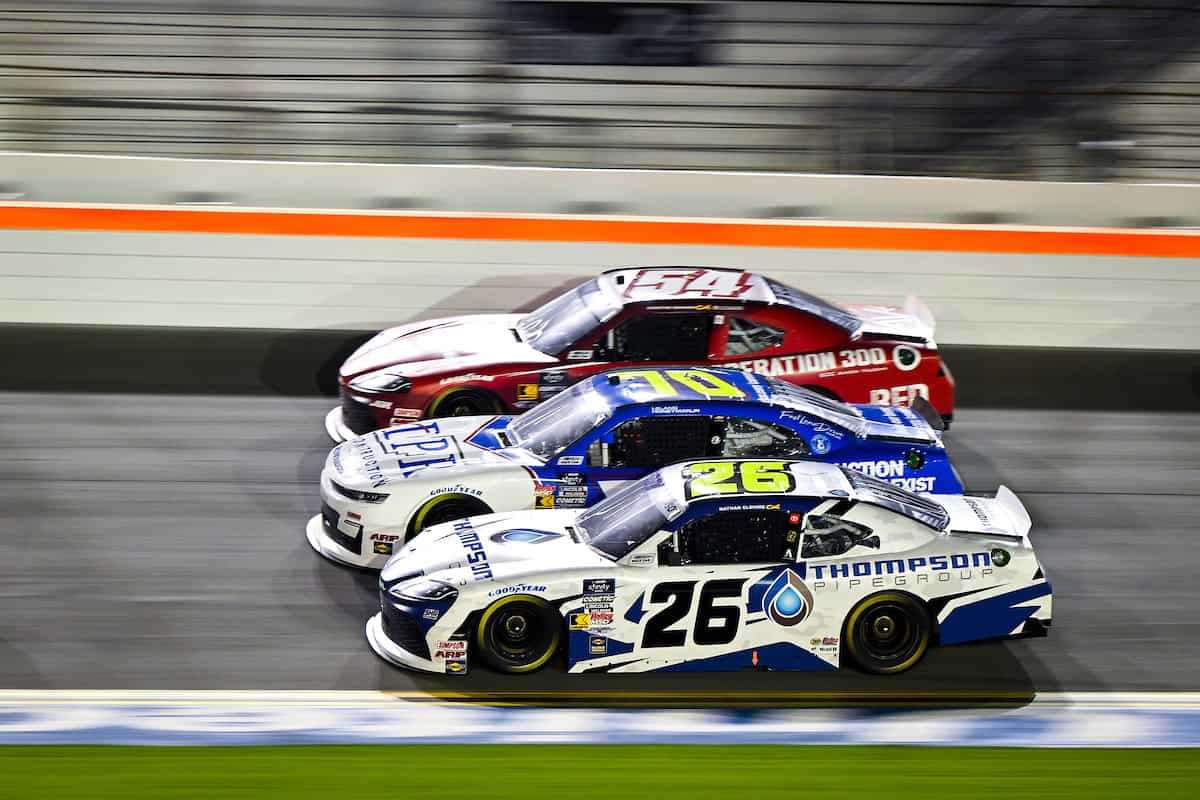This article is posted in collaboration with an outside partnership client. The opinions and information contained within do not necessarily represent Frontstretch and its staff.
NASCAR circuits hold a series of distinct hurdles that shape the tactics a driver must adopt week to week. The differing lengths, variable banking, and any shift in surface, from smooth asphalt to gritty concrete, demand that a driver recalibrates the moment the green flag waves. Such necessities highlight the sport’s core demands of adaptability, accuracy, and practiced intuition.
To dominate any repetition of a given layout, a competitor must grasp how each feature interacts not only in isolation but in the context of evolving tire and weather conditions. Savvy fans, in turn, find that the blending of these subtleties adds layers to respectful betting. An appreciation for the mathematical subtleties becomes a richer, tangible narrative.
Beyond fixed identifiers, a NASCAR layout functions as a living puzzle that the pilot must solve. The corners, some dramatically arced and others deceptively tight, combine with varying grip levels to form an ever-changing backdrop.
Anchored in this unpredictability, the driver’s goal remains constant: to exploit the last ounce of surface adhesion before the tires surrender and steer the car in the intentionally fine window that allows speed but not loss of control. The driver judged unbeatable a month ago might be suddenly outpaced; mastery is a moving target requiring genuine art.
The ability to adjust strategies based on the nuances of each track can mean the difference between winning and losing. This deeper understanding can also be beneficial for those utilizing resources like a bet 365 bonus code to make informed decisions.
Challenges Presented by NASCAR Tracks
The range of track types in NASCAR is arguably the sport’s most recognizable trait. Starting with the bullrings at venues like Bristol and stretching to the enormous ovals of Talladega, every circuit lays out its own puzzle. Bullrings punish mistakes with tight quarters and quick, staggered corners, forcing drivers to drill lap-after-lap precision.
Superspeedways flip the script, swapping track width for slipstream and lift, so every car alignment, grip measurement and side-draft tug can mean miles-an-hour over three- or four-kilometer straights. The difference is enough to make any driver’s playbook blurry at the border, and most car setups at least redrawn.
Surface texture is the most overlooked aspect that turns the track sheet into a living maze. Concrete and asphalt, each well-paved to the eye, react in entirely different gradients of grip and fade. The lap chart may show the same corner, but tire compounds lengthen and tighten at different throttle points.
Toss in a weather layer, with humidity in the morning or late-afternoon will-dry patches, and the circuit rewrites its own script in intervals a driver can only catch at the corner exit. Missing the rhythm is a risk measure drivers often trail by the tire-chatter of ear-crushing corners.
Slice past the casual highlights and these granular moves build the essential narrative. Notes in the garage, lap ear-tuned fizer, tire-chatter fuse into a signaling that all the players scrutinize — fans included.
How Drivers Adapt to Track Variations
Elite drivers understand that speed is only half the equation; the other half is the nimble capacity to pivot within the expectations of any given circuit. By combining telemetry charts and onboard footage before the lights go out, they calibrate braking points and throttle applications to the precise quirks of asphalt laid weeks before.
Contingent on that assessment is the painstaking tuning of tire pressure, cambers and ride heights, decisions that read like poetry to seasoned engineers but are instinct to the driver who sips the same bile-sour air for 400 laps.
That same adaptability bleeds into the cockpit mentality. They spool the last race’s data files, dissecting every pass and every pit stop, while sideways glances at rivals’ pit-strategy reels map likely gambits. When spring rains stripe tun 4 and the checker unfurls, or when a half-loose corner suddenly sprouts gearbox chatter, reaction becomes second nature. Error becomes a relic of drivers who lean only on muscle memory and miss the nuance.
Across the grid, managers, commentators and fans witness the same narrative from the pit wall to the couch. The adaptability isn’t mere rote skill; it is the litmus confirming a driver’s uneasy partnership with metal and asphalt.
Folks painstakingly tracking the circuit lap-by-lap share the same banks of data, and those weighing a wager glean invaluable hints from an ounce of intelligent foresight. Knowing that adaptability is the real race reserved within 50 pounds of helmet and numeric real.
Engaging With NASCAR Through Responsible Wagering
Fans who relish the strategic game within NASCAR will find that responsible wagering deepens rather than distracts from the sport.
Bonus codes and analytics websites put driver performance metrics at bettors’ fingertips, showcasing how particular racers handle diverse surfaces, weather, and banking. By poring over this data, bettors craft educated forecasts instead of chasing fleeting hunches.
Exploring how tire choices, fuel windows and even pit strategies alter outcomes at Daytona versus Martinsville sharpens the wagering lens. Bettors who cross-reference last week’s speed rankings with today’s weather report gain an edge, and the practice turns pure speculation into a disciplined analytic exercise.
The sport’s complexity, distilled into odds and driver splits, reorients the mind from guesswork to strategy, quietly reinforcing responsible wagering habits.



